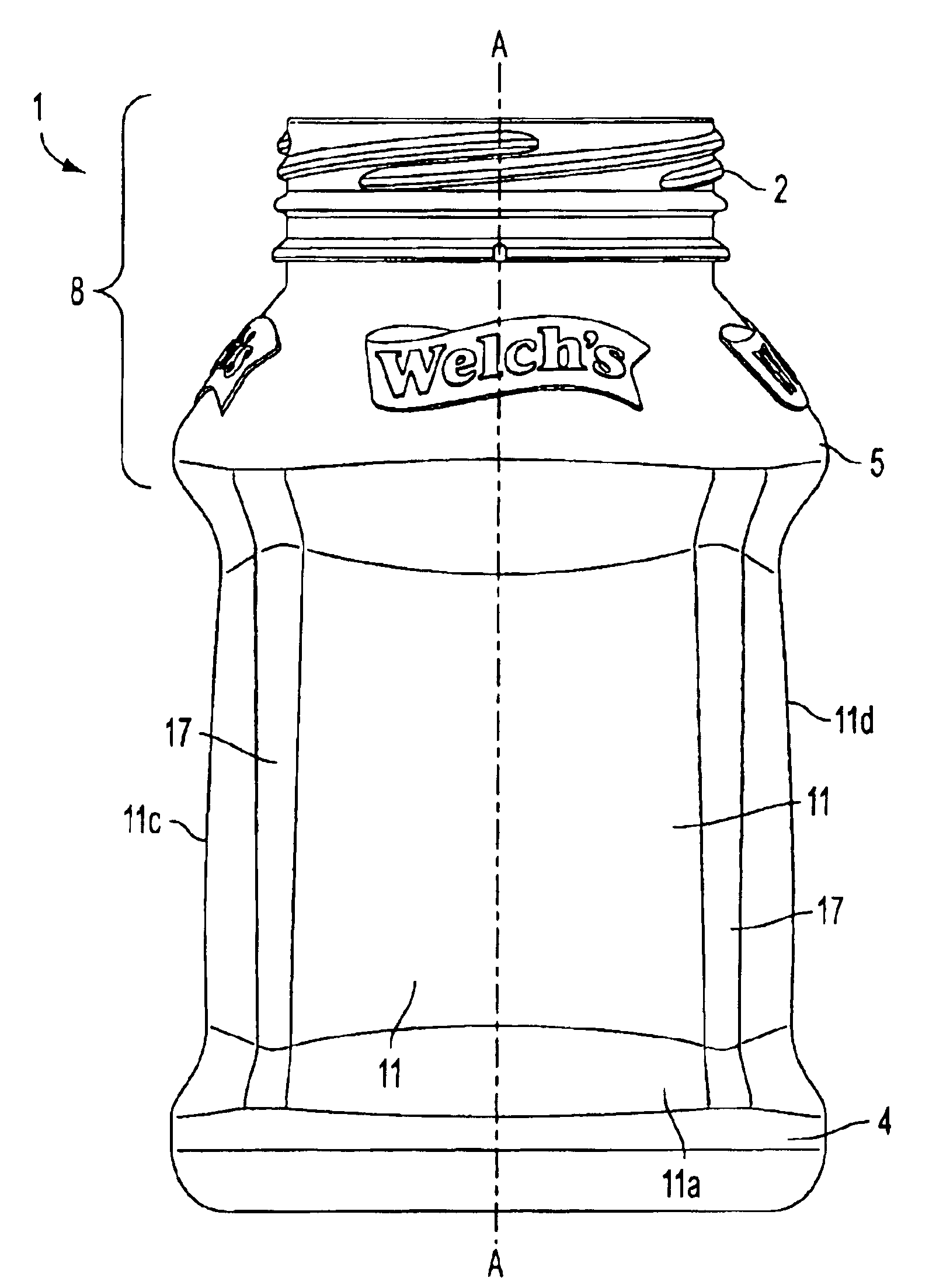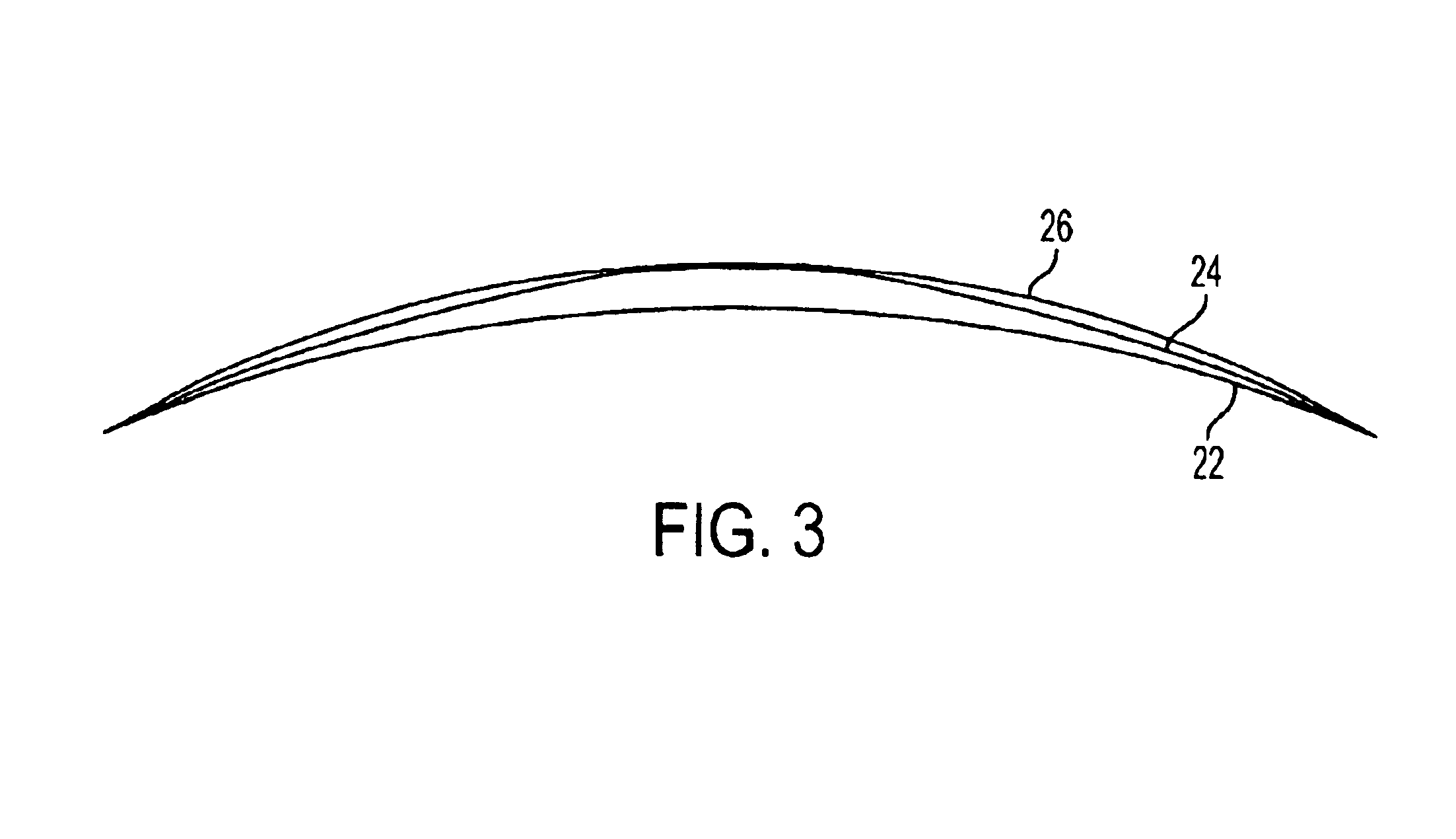Container with flexible panels
a container and flexible technology, applied in the field of pressure-adjusting containers, can solve the problems of high stress points at the top and bottom edges of the container, the thin sidewall of the container deforms or collapses, and the container is more likely to fail during storage or handling
- Summary
- Abstract
- Description
- Claims
- Application Information
AI Technical Summary
Problems solved by technology
Method used
Image
Examples
Embodiment Construction
[0035]A preferred embodiment of the invention is discussed in detail below. While specific exemplary embodiments are discussed, it should be understood that this is done for illustration purposes only. A person skilled in the relevant art will recognize that other components and configurations can be used without parting from the spirit and scope of the invention.
[0036]Referring now to the drawings, a preferred embodiment of a container incorporating flexible side panels is indicated generally in FIGS. 1 and 2, as generally having many of the well known features of hot-fill containers. The container 1 comprises a base 4 for supporting the container 1. The container 1 has a longitudinal axis (A—A) when the container 1 is standing upright on its base 4. A body 6 extends upwardly from the base 4.
[0037]A top portion 8 finishes upwardly from the body 6 and may include a threaded neck 2 for filling and dispensing fluid. Neck 2 also is sealable with a cap (not shown). The preferred contain...
PUM
 Login to View More
Login to View More Abstract
Description
Claims
Application Information
 Login to View More
Login to View More - R&D
- Intellectual Property
- Life Sciences
- Materials
- Tech Scout
- Unparalleled Data Quality
- Higher Quality Content
- 60% Fewer Hallucinations
Browse by: Latest US Patents, China's latest patents, Technical Efficacy Thesaurus, Application Domain, Technology Topic, Popular Technical Reports.
© 2025 PatSnap. All rights reserved.Legal|Privacy policy|Modern Slavery Act Transparency Statement|Sitemap|About US| Contact US: help@patsnap.com



